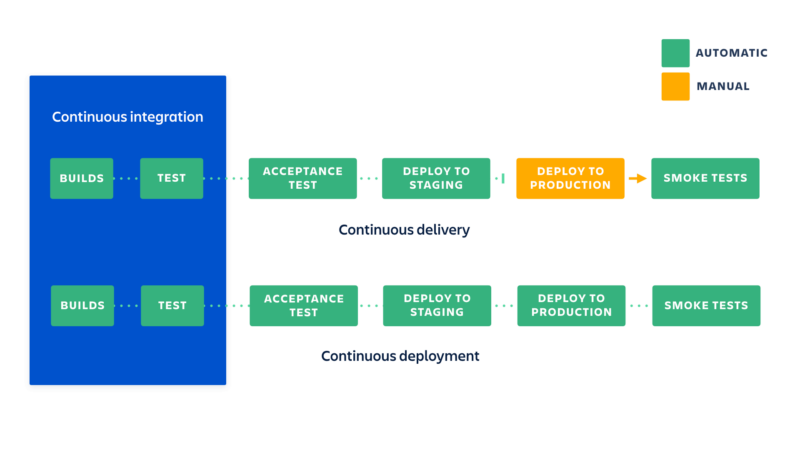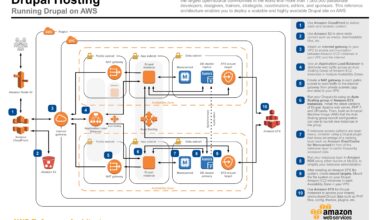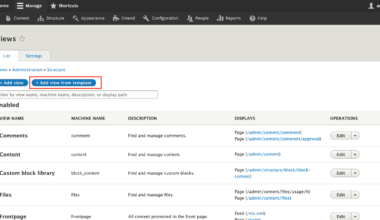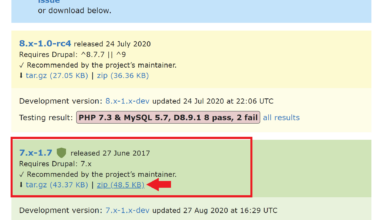Introduction: Understanding Continuous Deployment with Drupal
As a Drupal developer, you are well aware of the importance of keeping your website up-to-date with the latest features and security patches. However, the process of deploying changes can be time-consuming and prone to errors, especially if you are managing a large website with many modules and customizations.
This is where continuous deployment comes in. Continuous deployment is a software development practice that enables developers to release changes to their codebase frequently and reliably. By automating the deployment process, developers can reduce the risk of errors, improve the quality of their code, and accelerate the time it takes to release new features.
In the context of Drupal, continuous deployment involves using tools and techniques that enable you to automatically deploy changes to your website as soon as they are ready. This can be achieved by using a combination of version control, automated testing, and deployment tools that work seamlessly with Drupal.
In this article, we will explore the benefits of continuous deployment for Drupal websites, the tools and techniques you can use to implement it, and best practices for ensuring a smooth and reliable deployment process. By the end of this article, you will have a clear understanding of how continuous deployment can help you improve your Drupal development workflow and deliver better websites to your clients.
Benefits of Continuous Deployment for Drupal Websites
Implementing continuous deployment for your Drupal website can offer a wide range of benefits, including:
1. Faster Time-to-Market: Continuous deployment allows developers to release changes and new features to their website much quicker. By automating the testing and deployment process, developers can save time and focus on building new features instead of manual deployment tasks.
2. Improved Quality: With automated testing and deployment, the chances of errors and bugs are reduced. This leads to a more stable and reliable website, which is crucial for maintaining user satisfaction and trust.
3. Better Collaboration: Continuous deployment encourages collaboration between developers, testers, and other stakeholders. By automating the deployment process, everyone can work on the same codebase and have a clear understanding of the changes being made.
4. Increased Agility: With continuous deployment, developers can respond to changing requirements and user needs much faster. This allows for a more agile development process, where changes can be made quickly and efficiently.
5. Cost-Effective: By reducing the time and effort required for manual deployment tasks, continuous deployment can save businesses money. This is especially true for large websites with a lot of customizations and modules.
In summary, implementing continuous deployment for your Drupal website can lead to faster time-to-market, improved quality, better collaboration, increased agility, and cost savings. By automating the deployment process, developers can focus on building new features and responding to user needs, which is essential for staying competitive in today’s digital landscape.
Implementing Continuous Deployment with Drupal: Tools and Techniques
To implement continuous deployment with Drupal, you need to use a combination of version control, automated testing, and deployment tools. Here are some of the most popular tools and techniques that you can use:
1. Version Control: The first step in implementing continuous deployment is to use a version control system like Git or SVN. This allows you to keep track of changes to your codebase and collaborate with other developers.
2. Automated Testing: To ensure that your changes don’t break anything on your website, you need to use automated testing tools. There are many options available, including Behat, PHPUnit, and Selenium.
3. Continuous Integration: Continuous integration tools like Jenkins, CircleCI, and Travis CI can help you automate the testing and deployment process. These tools can automatically build, test, and deploy your changes as soon as you push them to your version control system.
4. Configuration Management: Drupal comes with built-in configuration management tools that allow you to manage configuration changes across different environments. By using tools like Drush, you can easily export and import configuration changes to your production website.
5. Cloud Hosting: To take full advantage of continuous deployment, you should consider using cloud hosting providers like AWS, Google Cloud, or Azure. These providers offer scalable infrastructure and tools that can help you automate your deployment process.
By using these tools and techniques, you can automate your deployment process and ensure that your changes are released quickly and reliably. However, it’s important to follow best practices to ensure a smooth and reliable deployment process.
Best Practices for Continuous Deployment with Drupal
Here are some best practices that you should follow when implementing continuous deployment with Drupal:
1. Use a Test Environment: Before deploying changes to your production website, you should test them in a separate environment. This can help you catch any issues before they affect your users.
2. Keep Your Codebase Clean: To ensure that your deployment process runs smoothly, you should keep your codebase clean and free of unnecessary files. This can help you avoid conflicts and errors during the deployment process.
3. Automate Your Deployment Process: By automating your deployment process, you can save time and reduce the risk of errors. Use tools like Jenkins to automate your testing and deployment process.
4. Use Version Control: Version control is essential for implementing continuous deployment. Use Git or SVN to keep track of your changes and collaborate with other developers.
Best Practices for Continuous Deployment with Drupal
Here are some best practices that you should follow when implementing continuous deployment with Drupal:
1. Use a Test Environment: Before deploying changes to your production website, you should test them in a separate environment. This can help you catch any issues before they affect your users. Create a staging environment that closely matches your production environment, and test your changes thoroughly before promoting them to production.
2. Keep Your Codebase Clean: To ensure that your deployment process runs smoothly, you should keep your codebase clean and free of unnecessary files. This can help you avoid conflicts and errors during the deployment process. Use tools like Composer to manage your dependencies, and remove any unused or duplicate files from your codebase.
3. Automate Your Deployment Process: By automating your deployment process, you can save time and reduce the risk of errors. Use tools like Jenkins to automate your testing and deployment process. Set up triggers that automatically deploy your changes as soon as they are ready, and use scripts to automate repetitive tasks like database updates.
4. Use Version Control: Version control is essential for implementing continuous deployment. Use Git or SVN to keep track of your changes and collaborate with other developers. Follow best practices like branching and merging, and use descriptive commit messages to document your changes.
5. Monitor Your Website: Continuous deployment is not a set-it-and-forget-it solution. You should regularly monitor your website for issues and performance problems. Use tools like New Relic or Blackfire to monitor your website’s performance, and set up alerts that notify you when issues arise.
By following these best practices, you can ensure a smooth and reliable deployment process for your Drupal website. Continuous deployment can help you release changes faster and with greater confidence, but it requires careful planning and attention to detail. With the right tools and techniques, you can make continuous deployment a key part of your Drupal development workflow.
Final Thought: Embracing Continuous Deployment for Drupal Websites
Continuous deployment offers numerous benefits for Drupal developers and website owners, including faster time-to-market, improved quality, better collaboration, increased agility, and cost savings. By automating the testing and deployment process, developers can focus on building new features and responding to user needs, which is essential for staying competitive in today’s digital landscape.
To embrace continuous deployment for your Drupal website, you need to use a combination of version control, automated testing, and deployment tools. Some of the most popular tools and techniques include version control systems like Git or SVN, automated testing tools like Behat or PHPUnit, continuous integration tools like Jenkins or CircleCI, and cloud hosting providers like AWS or Azure.
It’s important to follow best practices when implementing continuous deployment, such as using a separate test environment, keeping your codebase clean, automating your deployment process, using version control, and monitoring your website’s performance. By following these best practices, you can ensure a smooth and reliable deployment process and take full advantage of the benefits of continuous deployment.
In conclusion, continuous deployment is a valuable practice for Drupal developers and website owners who want to stay ahead of the curve. By embracing continuous deployment and using the right tools and techniques, you can streamline your development workflow, improve your website’s quality and performance, and deliver new features and updates to your users faster than ever before. So why wait? Start exploring the world of continuous deployment today and take your Drupal website to the next level!





















